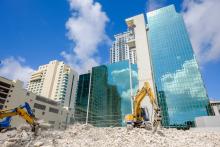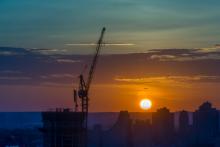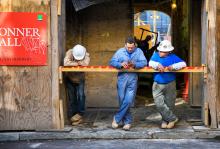
The Dodge Momentum Index moved 4% higher in March to 166.9 (2000=100), up from the revised February reading of 160.3. The Momentum Index, issued by Dodge Construction Network, is a monthly measure of the initial report for U.S. nonresidential building projects in planning, which has been shown to lead construction spending for nonresidential buildings by a full year.
In March, the commercial component of the Momentum Index rose 7%, while the institutional component fell by less than 1%. The Dodge Momentum Index moved 4% higher in March to 166.9, up from the revised February reading of 160.3.
The Dodge Momentum Index continued to trend higher in March, largely due to gains in planning for commercial projects. Commercial planning in March was just slightly lower than the all-time high set in October 2021. However, commercial planning has been much more volatile than institutional planning due to large projects' presence or absence, month-to-month. The institutional component has also been trending upward but remains 25% below the record set in December 2007. Compared to March 2021, the overall Momentum Index was 17% higher in March 2022. The institutional component was up 23% over the year, while the commercial component was 14% higher.
A total of 21 projects with a value of $100 million or more entered planning in March. The leading commercial projects were the $923 million third phase of the Atlas Power data centre in Williston, North Dakota, and the US$325 million Seaport San Diego Block F in San Diego, California. The leading institutional projects were the $500 million Kaiser Yesler Terrace medical building in Seattle, WA, and the $500 million Strong Memorial Hospital inpatient tower in Rochester, New York.
Nonresidential projects entering planning continue to be robust despite rising energy prices, higher material costs, and significant labour shortages. While projects should continue to enter the pipeline, the lag from planning to groundbreaking has been growing and will likely result in a delayed impact on construction starts.










